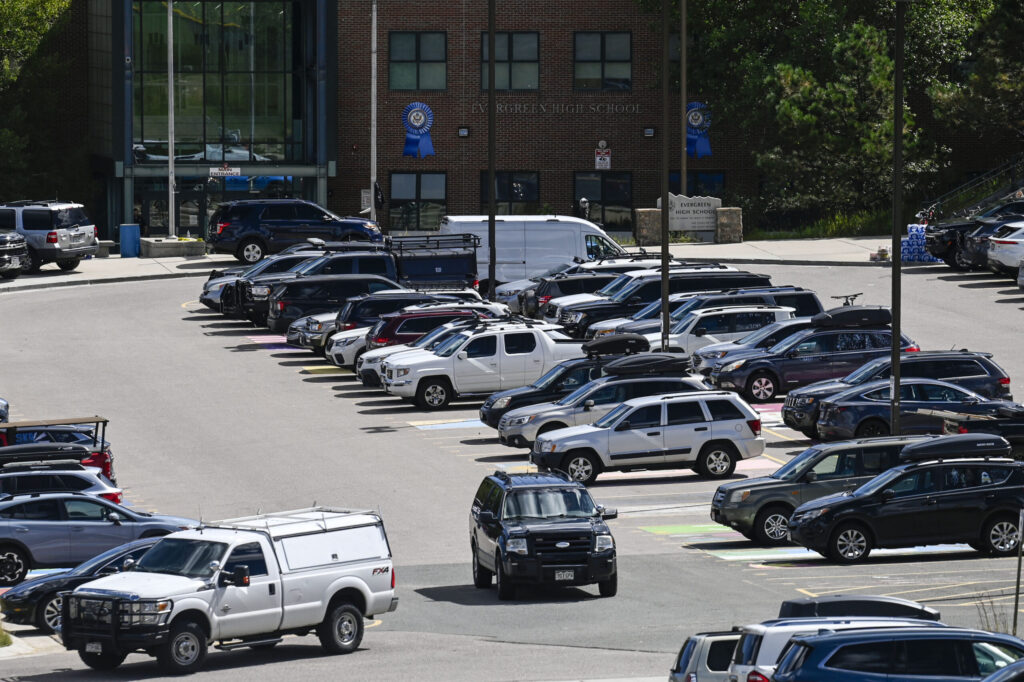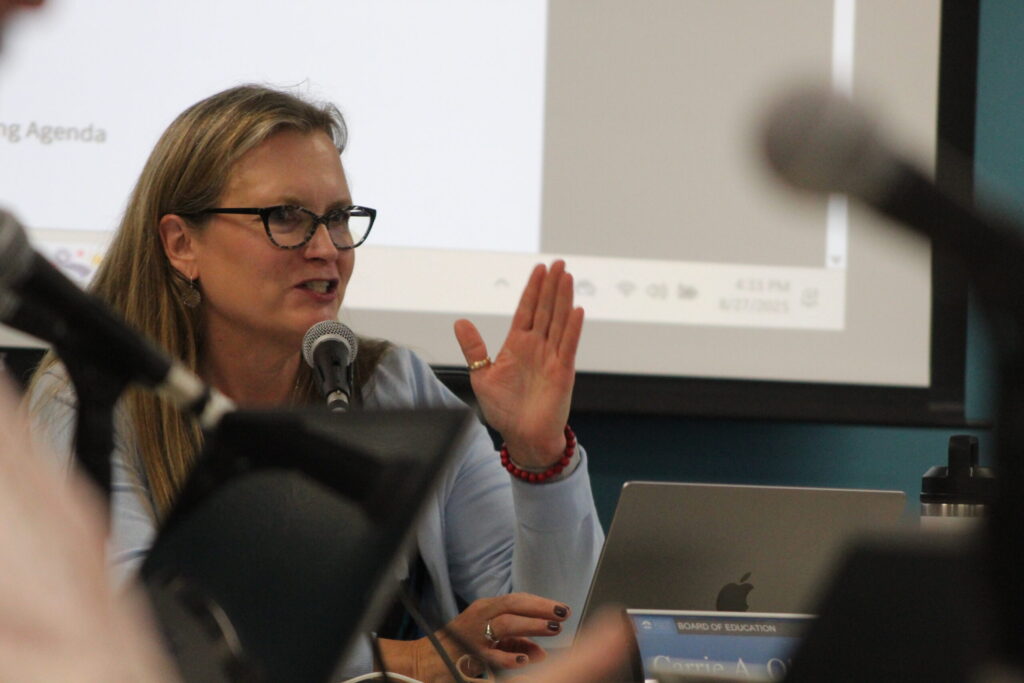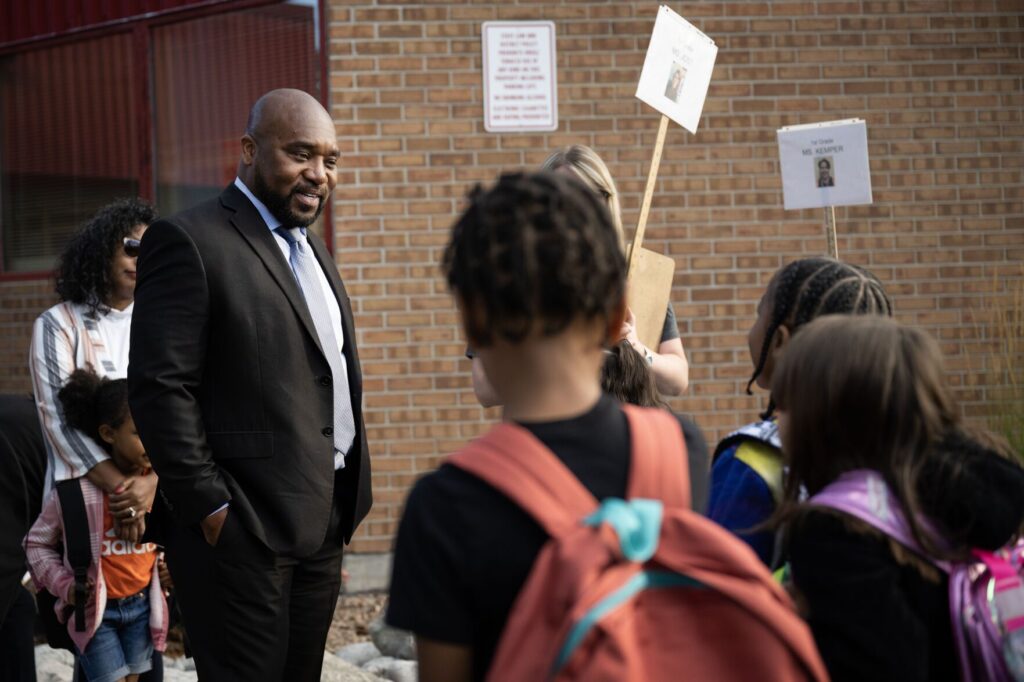Report links higher discipline rates to lower test scores in Colorado’s largest districts
Students in Colorado’s largest school districts who face more discipline tended to have lower test scores, according to a new report that examined student behavior and academic achievement across 21 districts.
Conducted by the Common Sense Institute, researchers billed the report as the first comprehensive look of its kind.
“It would seem like an intuitive thing that behavior would influence academic performance,” said DJ Summers, CSI’s director of policy and research.
Founded in 2010, the institute is a nonprofit organization in Greenwood Village that conducts fiscal and economic research.
The data for Denver Public Schools showed that the state’s largest school district had fewer — per capita — behavioral issues, falling in the bottom third in most categories.
The findings come as DPS Superintendent Alex Marrero faced criticism for his handling of school safety following several high-profile incidents, including the case of a student at East High School shooting and wounding two administrators two years ago. The incident, in which DPS allowed the troubled student from another school district to enroll at East, was among the decisions that sparked the “Resign DPS” movement to remove board members who oversee the superintendent.
The data also showed that DPS has among the highest rate of chronic absenteeism in the state at 37% of the students missing 10% or more of school in a given school year, as defined by the U.S. Department of Education.
Nationally, the rate of chronic absenteeism stood at 28% in the 2022-2023 school year.
Absenteeism, like behavioral issues, is widely considered an early-warning sign tied to lower achievement and higher dropout rates.
Among the state’s largest school districts, Pueblo School District 60 had the highest chronic absenteeism rate at 43%, followed by Aurora Public Schools (40%) and DPS.
Mesa County Valley (35%) and Greeley-Evans (34%) rounded out the top five.
The state’s chronic absenteeism rate last school year was 28%.
Bill Good, a DPS spokesperson, declined to comment.
Last school year marked the first time this data was made publicly available.
Three years ago, the Colorado’s legislature passed legislation requiring the Colorado Department of Education to collect, compile and create reports on information about the number of suspensions, expulsions, student restraints and law enforcement referrals annually.
Among the report’s findings:
• Chronic absenteeism, which during the COVID-19 pandemic hit 35%, was down statewide to 27.9%, but still elevated among urban school districts (28.3%).
• Across the state’s largest school districts, drug violations averaged 1.3 per 1,000 students, with Aurora Public Schools at the highest at 3.6.
• Districts with more student violations or higher absenteeism rates also tended to have lower SAT Math proficiency scores.
• Behavioral issues appeared highly concentrated with Harrison School District in Colorado Springs, which reported 389 incidents per 1,000 students — nearly triple the average of the districts analyzed.
• Aurora Public Schools had the most violent incidents, with 27 third-degree assaults per 1,000 students — outpacing the next highest district by 44%.
Academic performance tends to show a strong negative correlation with both discipline and absenteeism.
The CSI researchers said the report emphasized “the need for school leaders and policymakers to monitor trends annually and implement policies that foster both safety and academic excellence.”
Summers said the report underscores how environment can shape outcomes — not just in classrooms.
A similar “contagion” effects has shown up at work with a 2017 office-seating analysis by Cornerstone OnDemand, which found that sitting within 25 feet of a high performer was associated with a 15% productivity bump, while proximity to a low performer corresponded with a 30% drop.
“The findings are clear: school safety isn’t just about immediate well-being — it’s also a leading indicator of academic performance,” Cole Anderson, CSI deputy director of policy and research and co-author of the report, said in a news release about the study.
“A disruptive environment impacts every student, and if we want to close achievement gaps, we have to take school culture seriously,” he said.

















